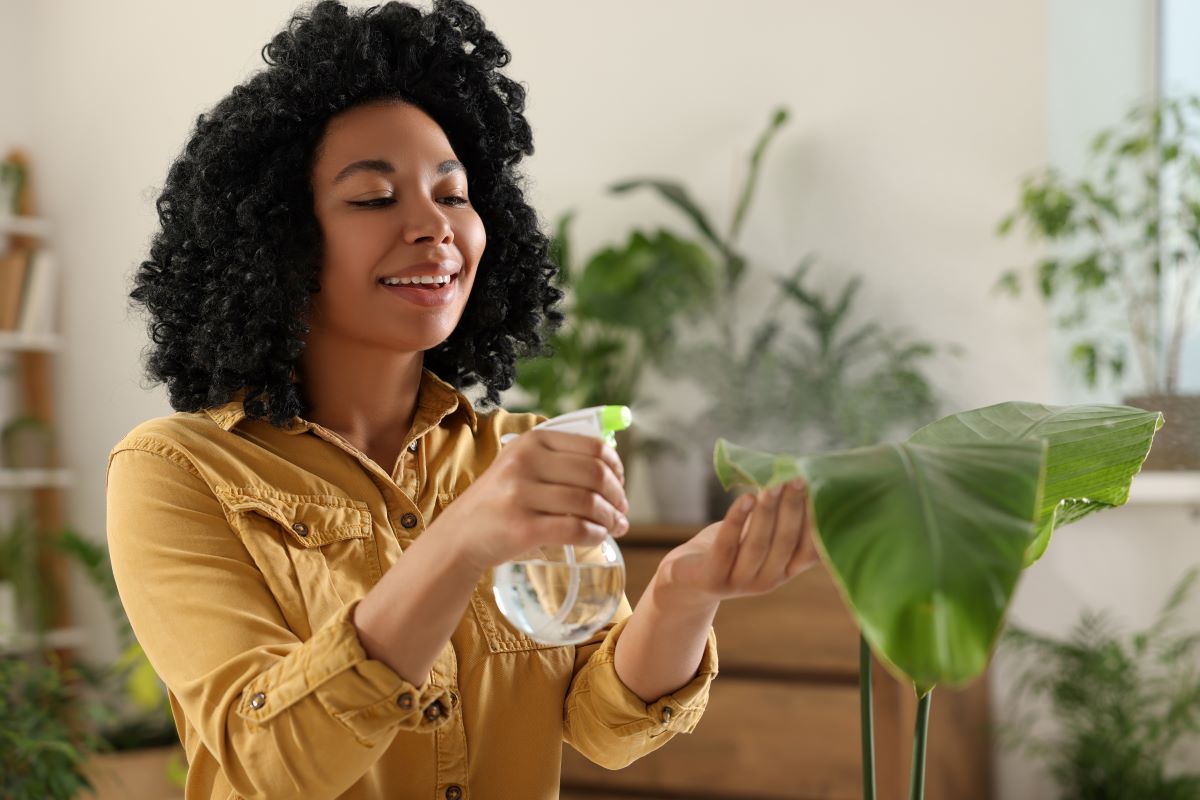Keep Your Indoor Plants Thriving With These Care Tips
Indoor plants can brighten any space and improve air quality. But how can you ensure your indoor jungle stays lush and healthy?
1. Know Your Plants’ Needs

Different plants have different requirements. Research the specific needs of each plant in your collection.
2. Water Wisely

Overwatering is a common mistake. Ensure your pots have drainage holes and allow the soil to dry out between waterings.
3. Provide Adequate Light

Place your plants where they can get the right amount of light. Some thrive in bright, indirect light, while others prefer low-light conditions.
4. Maintain Humidity

Indoor air can be dry, especially in winter. Use a humidifier or mist your plants regularly to maintain humidity levels.
5. Feed Your Plants

Use a balanced fertilizer to nourish your plants. Follow the recommended feeding schedule to avoid over-fertilizing.
6. Clean the Leaves

Dust can block light and clog pores on the leaves. Wipe them down regularly to keep them clean and healthy.
7. Prune Dead or Dying Leaves

Remove dead or yellowing leaves promptly. This helps prevent disease and encourages new growth.
8. Rotate Your Plants

Rotate your plants regularly to ensure all sides get adequate light. This helps them grow evenly.
9. Repot When Necessary

Repot your plants when they outgrow their containers. Fresh soil and more space can boost their growth.
10. Use Proper Pots

Choose pots with good drainage. Avoid pots that are too large, as they can lead to root rot.
11. Monitor for Pests

Regularly check your plants for pests like spider mites and aphids. Treat infestations promptly with appropriate methods.
12. Adjust for Seasons

Plants may need different care in different seasons. Adjust watering and light as needed throughout the year.
13. Group Plants Together

Group plants with similar needs together. This makes it easier to care for them and can create a microclimate.
14. Use Quality Soil

Invest in high-quality potting soil. It should be well-draining and rich in nutrients.
15. Give Them Space

Ensure your plants have enough space for air circulation. Crowding can lead to mold and mildew issues.
16. Be Patient

Plants take time to grow and adjust to new environments. Be patient and give them consistent care.
17. Understand Dormancy

Some plants go dormant and require less water and care during this period. Recognize dormancy signs to adjust your care routine.
18. Enjoy the Process

Caring for indoor plants should be enjoyable. Take time to appreciate the growth and beauty they bring to your space.
Now Go Green Your Space!

Ready to bring some life to your urban home or keep your indoor jungle thriving? These tips will help you cultivate a vibrant and healthy green space, no matter how small or large. So, roll up your sleeves, grab your watering can, and enjoy the satisfaction of nurturing your very own garden.
Toxic Talk: 21 Phrases to Never Say to Your Kids

Are you worried about the impact of your words on your child’s well-being? Let’s tackle 21 phrases that might be causing more harm than you realize. Toxic Talk: 21 Phrases to Never Say to Your Kids
Breaking Ties: Recognizing When It’s Time to Go No-Contact with Parents

Deciding to go no-contact with a parent is a profound, often painful choice, but sometimes it’s necessary for personal well-being. Are you grappling with the decision to distance yourself from a toxic parental relationship? Breaking Ties: Recognizing When It’s Time to Go No-Contact with Parents
Stop the Stereotypes: 20 Gender-Based Comments Kids Don’t Need

It’s time to challenge traditional narratives that limit kids’ potential. Here are gender-specific phrases and ideas to avoid, fostering a supportive and open-minded environment for the next generation. Stop the Stereotypes: 20 Gender-Based Comments Kids Don’t Need
The post Keep Your Indoor Plants Thriving with These Care Tips first appeared on Peachy Fours.
Featured Image Credit: Shutterstock / New Africa.
For transparency, this content was partly developed with AI assistance and carefully curated by an experienced editor to be informative and ensure accuracy.







